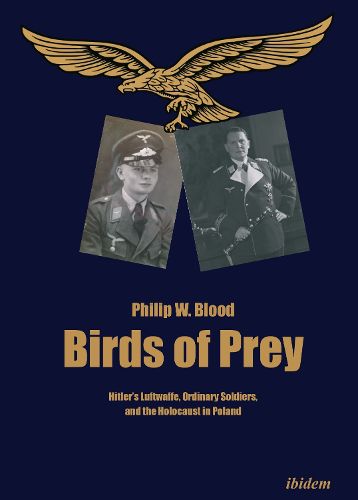Readings Newsletter
Become a Readings Member to make your shopping experience even easier.
Sign in or sign up for free!
You’re not far away from qualifying for FREE standard shipping within Australia
You’ve qualified for FREE standard shipping within Australia
The cart is loading…






Birds of Prey is a microhistory of the Nazi occupation of Bialowieza Forest, Poland’s national park. The narrative stretches from Goering’s palatial lifestyle to the common soldier on the ground killing Jews, partisans, and civilians. Based entirely on previously unpublished sources, the book is the synthesis of six areas of research: Hitler’s Luftwaffe, the hunt and environmental history, military geography, Colonialism and Nazi Lebensraum, the Holocaust, and the war in the East. By weaving together a narrative about Hermann Goering, his inner circle, and ordinary soldiers, the book reveals the Nazi ambition to draw together East Prussia, the Bialystok region, and Ukraine into a common eastern frontier of the Greater German state, revealing how the Luftwaffe, the German hunt, and the state forestry were institutional perpetrators of Lebensraum and genocide. Up until now the Luftwaffe had not been identified in specific acts of genocide or placed at large scale killings of Jews, civilians, and partisans. This gap in the historical record had been facilitated by the destruction of the Luftwaffe’s records in 1945. Through a forensic and painstaking process of piecing together scraps of evidence over two decades, and utilizing Geographical Information System software, Philip W. Blood managed to decipher previously obscure reports and expose patterns of Nazi atrocities.
$9.00 standard shipping within Australia
FREE standard shipping within Australia for orders over $100.00
Express & International shipping calculated at checkout
Birds of Prey is a microhistory of the Nazi occupation of Bialowieza Forest, Poland’s national park. The narrative stretches from Goering’s palatial lifestyle to the common soldier on the ground killing Jews, partisans, and civilians. Based entirely on previously unpublished sources, the book is the synthesis of six areas of research: Hitler’s Luftwaffe, the hunt and environmental history, military geography, Colonialism and Nazi Lebensraum, the Holocaust, and the war in the East. By weaving together a narrative about Hermann Goering, his inner circle, and ordinary soldiers, the book reveals the Nazi ambition to draw together East Prussia, the Bialystok region, and Ukraine into a common eastern frontier of the Greater German state, revealing how the Luftwaffe, the German hunt, and the state forestry were institutional perpetrators of Lebensraum and genocide. Up until now the Luftwaffe had not been identified in specific acts of genocide or placed at large scale killings of Jews, civilians, and partisans. This gap in the historical record had been facilitated by the destruction of the Luftwaffe’s records in 1945. Through a forensic and painstaking process of piecing together scraps of evidence over two decades, and utilizing Geographical Information System software, Philip W. Blood managed to decipher previously obscure reports and expose patterns of Nazi atrocities.